McGill is a research-intensive university credited with many scientific discoveries and other inventions. However, there are certain research projects that went horribly wrong and the university tends to downplay them. One of the most devastating discoveries ever made occurred in McGill University’s MacDonald Physics Building, which is now said to be cursed.
Welcome to the twenty-second installment of the Haunted Montreal Blog! Released on the 13th of every month, the February 2017 edition focuses on research we are carrying out into the building located at 1428 Stanley Street and reported paranormal activity within it. With the cold winter here, Haunted Montreal is not offering any more public tours until May, 2017. Stay tuned for some of the ideas we are planning for the winter months!
HAUNTED RESEARCH
1428 Stanley Street is non-descript brick building with a lot of history that sits in the heart of Downtown Montreal. The ramshackle, three-story edifice was once the heart of the West End Peel-Stanley Gay Ghetto, the city’s gay village during the 1970s, when bars Le Mystique and Truxx were located in the building. These were raided by police in 1977, prompting a strong response from the civil rights community. When Montreal’s gay village migrated eastwards in the 1980s, the bars began a slow and agonizing decline until their eventual bankruptcies. Other businesses have since tried to make a go of it in the brick building, but rumour has it the place is haunted.
According to certain sources, the unassuming building at 1428 Stanley Street has ghosts. A client named Suzanne contacted Haunted Montreal to recount a frightening tale that occurred when she worked there decades ago, in a bar called Glace.
Suzanne explained: “When I started working there in 1982 (and until 1986 – it was called Glace and then the Sphynx), Le Mystique was still in business and there were a lot of patrons there. I remember well because the employees’ entrance was in the basement where Le Mystique was.
Lots of fun and banter, if you can imagine! In the 80s, you had 3 clubs and one tavern in the building: Le Mystique in the basement, a tavern on the ground floor (I think it was called the Stanley Tavern), Glace was on the middle floor and above that was a Rock club that changed names many times (the Oxygène in the 70s, the Blitz and Metal in the 80s).”
When pressed for more details about the hauntings, Suzanne said: “As for my peculiar experiences there, they happened when the Sphynx re-opened briefly in 1995. I did work there only for a few months back then. The place was indeed not very pleasant. Big waves of depression would engulf me but they were lifted as soon as I got out of the building.”
“That was the first peculiar experience but it took me a while to figure out that it came from the building and not me. Mostly, I chalked it up to nostalgia since I’ve spent many years of my youth in this building as a customer and employee. But how to explain the way that this heavy depression would lift as soon as I got outside? Fresh air? Hmmm, not so sure.”
Suzanne elaborated on the dark feelings: “It was so heavy that it did bring me to tears many times. Some of my co-workers thought I was on drugs (I was not and I did not drink on the job either). Me, I thought I was courting a serious mental breakdown since I had had one a year or two before. But again, how come I would magically be back to normal as soon as I would pass the door? Besides, I was healthy and I knew it. That really bothered me. I had the distinct feeling that I was losing my mind.”
The bad mood continued, according to Suzanne: “It lasted the whole time I was there, maybe 6 months. It was so predictable that once I established the pattern, it became sort of a game for me: you get in the door and this big black cloud of depression engulfs you but have no need to fear it because when you get out, it magically disappears – and it works every time. And faster than any anti-depression medicine on the market! Move over Prozac!”
In addition to suffering from the constant negative energy in the building, Suzanne also had other experiences which might be described as paranormal: “The biggest and weirdest occurrence was the giant footsteps from above (the top floor upstairs).That happened around 5 am when we (the staff) were relaxing and having a few drinks at the bar. This did not happened often as we usually left for home at around 4 am and rarely (if ever) hung out at the club after our shift.”
She recalled: “We were talking and having fun remembering the 80s in that club when it was really hot and happening. Suddenly, these giant and very loud footsteps were heard from above. Exactly like someone (a very heavy someone) running the length of the upstairs many times in a row. Like I said, it was very, very loud. Then, as a joke, I asked: “Who is that fatso who’s doing his jogging inside at 5 am?” I thought I was being funny because it was so loud and so obvious that someone was upstairs running, not to mention peculiar.”
“Then I saw the look of the people I was with, the manager and the owner. I saw the look on their faces: they were not laughing and their faces had become white. They were scared, confused and really shook up. No need to tell you that the fun was over and done with. Me, I was adamant that someone was clearly upstairs. It was obvious. They told me it was impossible because, firstly, both doors (to access the above floor) were locked and chained, with a padlock for extra security. Secondly, the entire upstairs floor was being used as a storage room to pack all the tables and chairs that weren’t used for many years. They were many, many of them. They were all on top of each other. In other words, it was so packed with tables and chairs upstairs that one could not walk on that floor, let alone run. So then, we all went upstairs to investigate. By then, the running footsteps has stopped. Indeed, both doors were locked, chained and padlocked. We could only walk a few steps in front of both doors inside that space.”
Deeply disturbed, she decided that she’d had enough, exclaiming: “That is when I decided to run and get the **** out. I was so shaken. I could not wrap my head around it. The fact is that I was sure someone was there, but having a person up there was impossible. It didn’t make any sense to me. We all heard it, as clear as day and very loud at that. And it lasted a while, maybe 4 to 5 minutes. I got out so fast, I was scared. I needed to walk home alone, clear my head in trying to make sense of all of this. I wanted to be alone, in part because I knew the people I was with were not very open to the notions of ghosts and supernatural phenomena. I was too shaken up to have an argument. Besides, I like to be alone.”
One of the strangest things Suzanne recalled that night in the chair-crammed room was a sudden drop in temperature, explaining: “Note: it was icy cold and we could see our breath (it was early summer).”
She continued: “When I came back to work a few days later, we did not talk about it. The feeling of heavy oppression was there and I felt like I was the only one feeling it. Then I quit the job a few weeks later. The people I worked with (who I had known for years), were becoming mean, suspicious and deceitful. That was very strange and weird. I got the feeling that I got out of there just in time.”
Suzanne’s strange experiences may somehow be connected to the turbulent history of the building, which has seen a lot of negative action over the years. When asked about her own theories concerning the haunting, she stated: “You can imagine that with so many different clubs spread over different decades, many violent occurrences did happen. I heard about stabbings, shootings, people dying while descending the stairs drunk and a couple of passion killings at the Truxx. Most of them are hearsay but during the time I worked there, some of them happened.”
Despite stories of occasional tragedy or violence, Le Mystique and Truxx were also instrumental in spurring social change for Montreal’s queer citizens. As mentioned, during the 1970s, the bars were located in the West End Peel-Stanley Gay Ghetto, the predecessor to Montreal’s famous Gay Village that exists to the east today.
In the early hours of Oct 21, 1977, a massive police presence gathered on Stanley Street with a plan to raid both gay bars. Arriving with their machine guns drawn, the cops descended on the bars and proceeded to arrest a total of 146 gay men, all of them on questionable charges.
Many of those arrested were forcibly given medical tests for venereal diseases, which involved inserting a Q-tip into the urethra, before being crammed into tiny, crowded cells for the night. The next day they were charged with “gross indecency”. Citizens were outraged at the discrimination and began mobilizing.
It was seen as Montreal’s Stonewall moment, a reprise of the oppression suffered by the LGBT community in New York City in 1969. At the time, many of Montreal’s citizens theorized that the municipal authorities were attempting to remove all elements of the gay community from the downtown core and push them to the outskirts in the east.
The following evening, there was tension in the air. Over 3000 people, gay men and their allies, marched to the intersection of Ste. Catherine and Stanley Streets. In protest of the police harassment, they blocked traffic, essentially paralyzing Montreal’s downtown core. This act of resistance attracted huge amounts of media attention and highlighted issues of human rights abuses in Montreal. The Journal de Montréal headline exclaimed: “Les Homos et la police: c’est la guerre!” (translation: “The Homos and the police: it’s all out war!”)
With pressure mounting, politicians scrambled to resolve the situation. The following December Quebec’s National Assembly approved Bill 88, a new law that added sexual orientation to Quebec’s charter of human rights, making it illegal as a basis for discrimination. This law made Quebec the first place in North America to have such protection, sparking one of Montreal’s first Pride Parades in 1979.
Despite its important role in helping to secure better human rights for Montreal’s LGBT community, Le Mystique finally closed its doors in 2009. After 37 years of operation, it was Montreal’s oldest gay bar when it closed. The Gay Village had migrated eastwards to the Sainte-Catherine Street neighbourhood between Berri and Papineau Streets, taking with it many of the former patrons. The West End Peel-Stanley Gay Ghetto was no more.
Meanwhile, an archivist assisting with this story had a strange encounter while carrying out research at the National Library and Archives of Quebec. While poring over some online documents, she had a bizarre experience:
“I was doing my research in the newspapers to see who or what could be haunting the place. Suddenly, I saw on my screen that there was a shooting at the Oxygène bar in 1979; 5 people were hit by bullets. I keep reading and at one point I felt a heavy hand on my head that pushed my head down. Right away, a headache appeared. I was upset because I was not expecting that. I stopped searching a few minutes later. The headache disappeared.”
The archivist had been researching Claude Monteuil and Claude Joly, two men who were charged with five counts of attempted murder after opening fire in L’ Oxygène nightclub on the night of December 27, 1979. At the nightclub, the two men encountered a group of young Italians who had crashed their first party after having been released from prison just a few weeks earlier. After a heated exchange, the gentlemen decided to take things outside. However, as they were headed towards the door, Montreuil instructed Joly to shoot the Italian youths, which resulted in a bloodbath. While both Joly and Montreuil claimed they were defending themselves, presiding Judge Choquette didn’t buy the argument, saying the whole thing could have been avoided if they had stayed at home. Needless to say, Joly was sentenced to 25 years in jail and Montreuil was given 12 years.
Feeling disturbed, the archivist contacted a medium who told her that it might be an entity who wanted to warn her that she was in his territory, as if he wanted her to stop doing research.
To make matters worse, a photographer was sent to take pictures of the building also had a weird encounter. He had spent over an hour documenting the establishment, but upon returning to his studio, he was shocked to discover that every single photograph he had taken was mysteriously deleted from his digital camera. What had happened to the images, he wondered.
On his second visit, the fresh batteries in his regular camera mysteriously failed. He decided to use his cellphone camera, only to discover that it had inexplicably disappeared. It was only after buying new batteries for his camera that, on his third attempt, he was finally able to take some pictures. Incidentally, his phone was eventually found by an office worker on the west side of Stanley Street, which is unusual because the photographer had only been on the east side of the street.
Could it be possible that the same entity who harassed the archivist is also responsible for deleting the photographs and causing the phone to go missing? If so, why might the strange entity want to prevent the investigation into this haunting?
Today, Brigade Pizza occupies the ground floor of the building. Founded in April 2013, the restaurant offers custom-built Neapolitan pizzas, salads and panuozzos, offering a new concept in Canada.
When questioned, the young staff who work at Brigade Pizza were surprised to learn that the building was allegedly haunted. According to one young lady, nobody has experienced anything that might be considered paranormal recently and the upper floors of the building are now being offered as office space.
Whether or not the hauntings continue today is unknown. Furthermore, to date, there is no information that could lead to the identity of the paranormal entity who harassed the archivist and photographer. Could there be something to hide, like a long-forgotten murder? Only one thing is certain: the building at 1428 Stanley Street has a lengthy and storied history involving everything from passion killings, gun fights, fatal accidents, police brutality and the violation of human rights. These types of negative occurrences can sometimes lead to haunted activity. Whatever the case, perhaps only more paranormal incidents in the building and continued research will one day lead Haunted Montreal to identify the elusive entity who allegedly haunts 1428 Stanley Street.
COMPANY NEWS
Haunted Montreal is now in winter mode, meaning there will be no more public tours until May, 2017. Private tours are still available for groups of 10 or more people, subject to the availability of our actors and weather conditions.
We are going to try and develop some activities for the winter, such as haunted pub crawls and ghost investigations in haunted buildings. If you have any suggestions for haunted activities during the winter months, please contact info@hauntedmontreal.com.
We also plan to improve and upgrade our website and blog to make them more manageable and user-friendly.
A big thank you to all of our clients who attended a Haunted Montreal ghost walk during the 2016 season! If you enjoyed the experience, we encourage you to write a review on our Tripadvisor page, something that helps Haunted Montreal to market its tours. Lastly, if you would like to receive the Haunted Montreal Blog on the 13th of every month, please sign up to our mailing list.
Coming up on March 13: Old General Hospital
Hundreds of elderly people live in a large, ramshackle building that sits on the corner of René Lévesque Boulevard and Saint Dominique Streets, in the north-east corner of Montreal’s Chinatown. Once Montreal’s General Hospital, the building is now called the Paul-Émile-Léger CHSLD, a government-funded home for the elderly. According to various sources, haunted activity is not uncommon in the establishment, including disturbing thoughts that seem to come out of nowhere and sightings of a mysterious ghost who sits on the high rooftop staring down at people on the street below. Could these hauntings be related to the old Montreal General Hospital, which operated on the site from 1822-1953, or might they derive from an abuse scandal that rocked the establishment during the 1990s, when it was called Saint-Charles-Borromée Hospital?
Donovan King is a historian, teacher and professional actor. As the founder of Haunted Montreal, he combines his skills to create the best possible Montreal ghost stories, in both writing and theatrical performance. King holds a DEC (Professional Theatre Acting, John Abbot College), BFA (Drama-in-Education, Concordia), B.Ed (History and English Teaching, McGill) and MFA (Theatre Studies, University of Calgary). He is presently studying to obtain an ACS (Montreal Tourist Guide, Institut de tourisme et d’hôtellerie du Québec).

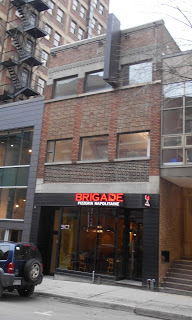
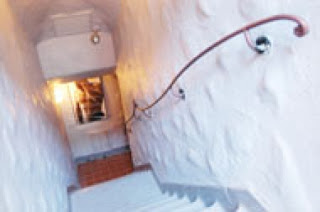
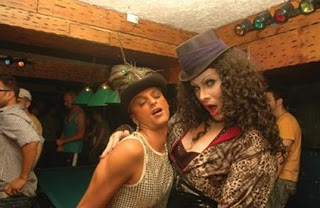
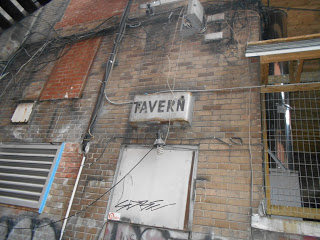

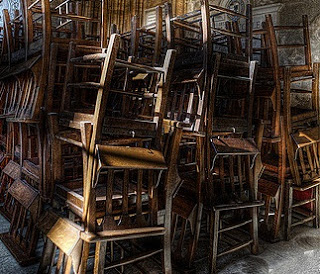

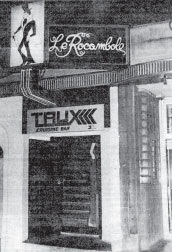


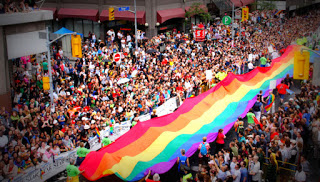
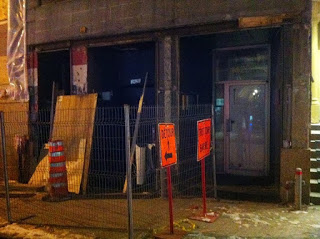
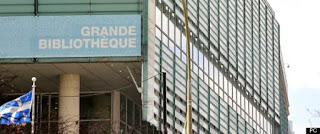


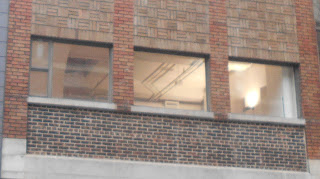
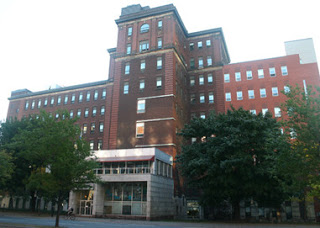

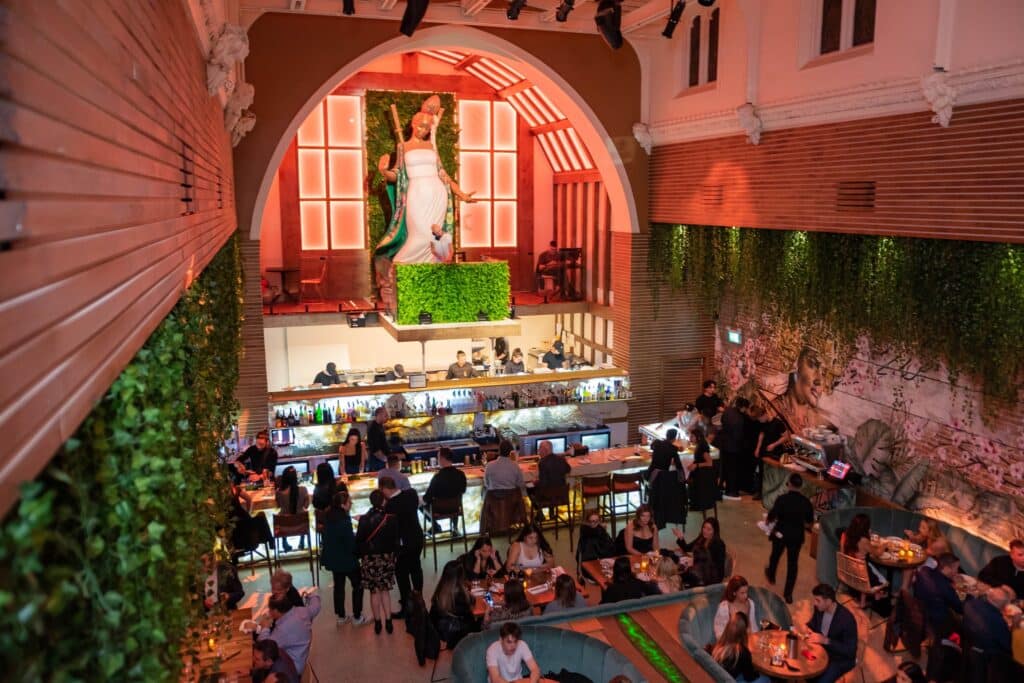
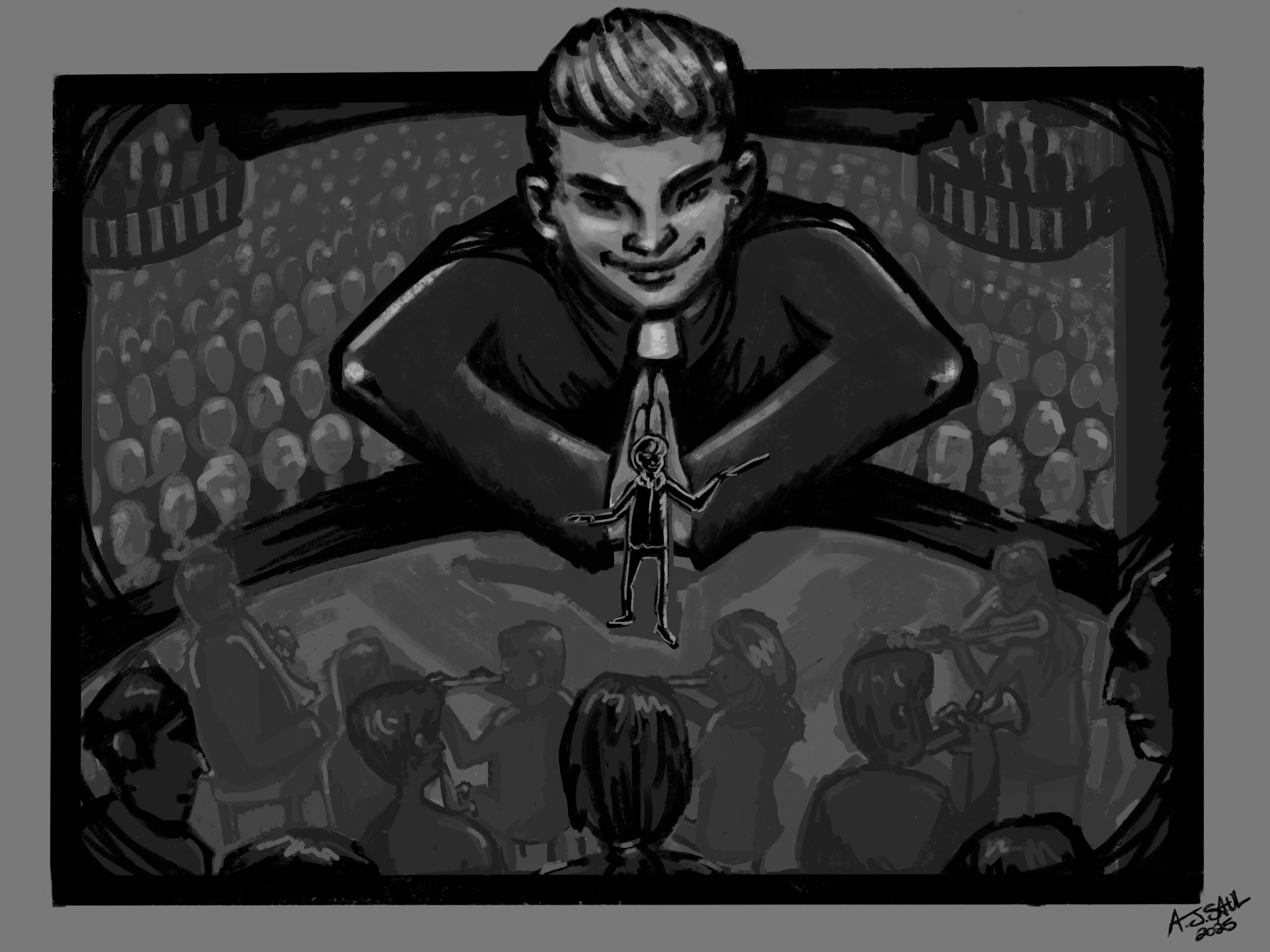
Comments (0)